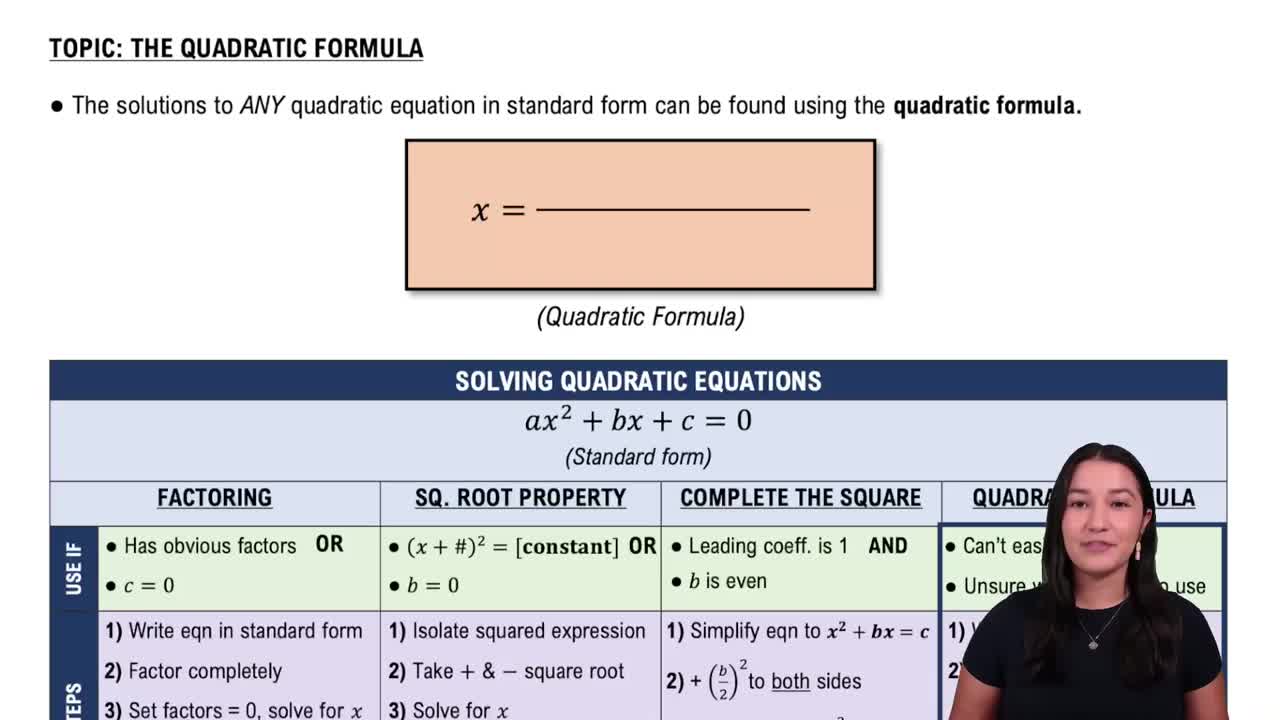Here are the essential concepts you must grasp in order to answer the question correctly.
Quadratic Functions
A quadratic function is a polynomial function of degree two, typically expressed in the form f(x) = ax^2 + bx + c. The graph of a quadratic function is a parabola, which can open upwards or downwards depending on the sign of the coefficient 'a'. Understanding the general shape and properties of parabolas is essential for sketching their graphs.
Recommended video:
Solving Quadratic Equations Using The Quadratic Formula
Vertex and Intercepts
The vertex of a parabola is the highest or lowest point on its graph, depending on its orientation. The intercepts are the points where the graph crosses the x-axis (x-intercepts) and y-axis (y-intercept). Finding these points helps in accurately sketching the graph and understanding the function's behavior.
Recommended video:
Axis of Symmetry
The axis of symmetry of a parabola is a vertical line that divides the graph into two mirror-image halves. For a quadratic function in standard form, the axis of symmetry can be found using the formula x = -b/(2a). This line is crucial for graphing the parabola and determining its domain and range.
Recommended video:
 Verified step by step guidance
Verified step by step guidance Verified Solution
Verified Solution



 7:42m
7:42m